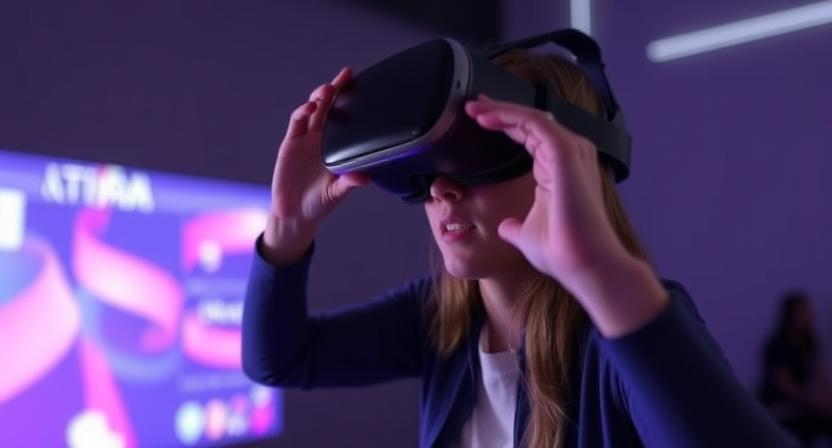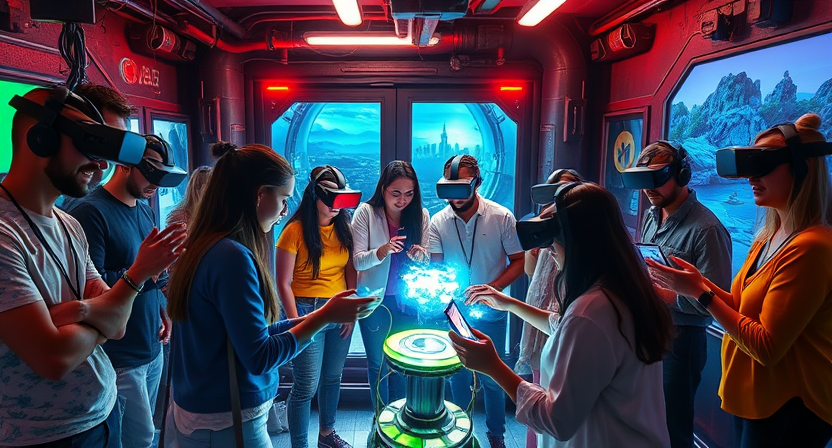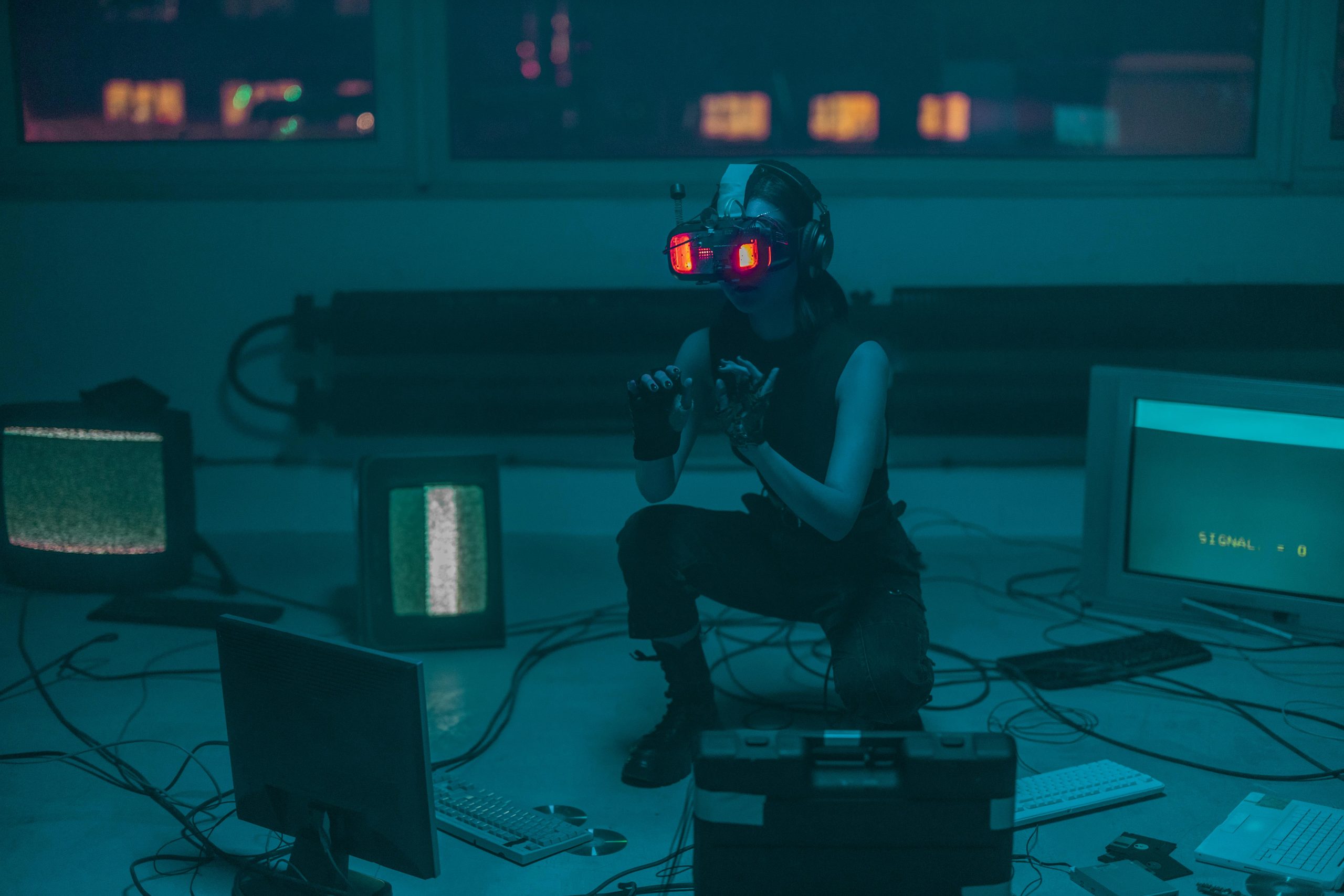Tips for Preventing Motion Sickness in Virtual Reality
Understanding how to prevent motion sickness when using virtual reality can enhance your overall experience and make it more enjoyable. One effective tip is to make sure you choose the right VR equipment that suits your needs and fits comfortably. The equipment should have smooth tracking and high resolution to minimize the risk of experiencing motion sickness.
Additionally, it is crucial to take breaks and rest your eyes regularly while engaging in VR experiences. Prolonged use without breaks can strain your eyes and contribute to feelings of nausea or discomfort. By giving yourself short breaks and allowing your eyes to rest, you can decrease the likelihood of experiencing motion sickness in virtual reality.
Understanding the Causes of Motion Sickness in Virtual Reality
Virtual reality (VR) motion sickness occurs when there is a disconnect between what your eyes perceive and what your body physically experiences. This sensory mismatch can trigger feelings of discomfort, nausea, and dizziness, leading to motion sickness. The brain receives conflicting signals: your eyes see movement in the virtual environment, but your body is stationary in the real world. This discrepancy can confuse the brain’s equilibrium and orientation centers, resulting in symptoms of motion sickness.
Another contributing factor to motion sickness in virtual reality is the frame rate and latency of VR devices. Low frame rates or delays in tracking movements can create a lag between your physical actions and what you see in the VR headset. This delay can disrupt the brain’s ability to process information smoothly, leading to feelings of disorientation and queasiness. Ensuring that your VR equipment operates smoothly and efficiently can help reduce the risk of experiencing motion sickness during virtual reality experiences.
Choosing the Right VR Equipment to Minimize Motion Sickness
When looking to minimize motion sickness in virtual reality experiences, selecting the appropriate VR equipment is crucial. Opting for headsets with a high refresh rate and low latency can help reduce the chances of feeling queasy while immersed in VR environments. Devices with a wider field of view and higher resolution can also contribute to a more comfortable and realistic experience, potentially mitigating the onset of motion sickness.
In addition to considering technical specifications, choosing VR equipment that fits comfortably and securely on your head is essential. Ill-fitting headsets can create unnecessary pressure points and discomfort, which may exacerbate feelings of nausea. Furthermore, selecting equipment from reputable manufacturers known for their high-quality products and design considerations can significantly improve the overall VR experience and minimize the risk of motion sickness.
Taking Breaks and Resting Your Eyes Regularly
In the fast-paced world of virtual reality (VR), it can be easy to get lost in the immersive experience for extended periods of time. However, taking breaks and resting your eyes regularly is essential in preventing motion sickness and eye strain. By giving yourself short breaks every 20-30 minutes, you allow your eyes and brain to rest and recalibrate, reducing the risk of discomfort and fatigue.
Additionally, during these breaks, it is beneficial to focus on objects at different distances to give your eyes a chance to adjust and relax. Looking away from the VR screen and into the distance for a few moments can help alleviate any strain on your eyes and reduce the chances of experiencing dizziness or nausea. Remember, a little break goes a long way in ensuring a pleasant and comfortable VR experience.
Adjusting the VR Settings to Reduce Motion Sickness
When it comes to minimizing motion sickness in virtual reality experiences, adjusting the settings of your VR equipment can make a significant difference. One of the key settings to pay attention to is the field of view (FOV). A narrower FOV can help reduce feelings of disorientation and nausea, so consider adjusting this setting to see if it improves your comfort level during VR use.
In addition to the FOV, adjusting the refresh rate of your VR headset can also play a role in reducing motion sickness. A higher refresh rate can provide smoother visuals, which may help alleviate feelings of dizziness or discomfort. Experiment with different refresh rate settings to find the one that works best for you and enhances your overall VR experience.
Keeping Yourself Hydrated and Well-Rested Before Using VR
Before immersing yourself in a virtual reality experience, ensuring that you are adequately hydrated and well-rested can significantly help in preventing motion sickness. Dehydration and fatigue can exacerbate the symptoms of motion sickness, making it crucial to drink plenty of water throughout the day and get a good night’s sleep before donning your VR headset.
Dehydrated individuals are more prone to dizziness and nausea, which are common symptoms of motion sickness in virtual reality. By drinking water regularly and maintaining proper hydration levels, you can reduce the likelihood of experiencing these discomforts during your VR sessions. Similarly, being well-rested allows your body to function optimally and can aid in minimizing the effects of motion sickness. So, make it a priority to prioritize hydration and rest before delving into the virtual world to enhance your overall VR experience.
Avoiding Spinning or Rapid Movements in VR Experiences
To prevent motion sickness in virtual reality, it is crucial to avoid spinning or rapid movements in VR experiences. These sudden changes in direction can disrupt the balance between what your eyes see and what your inner ear senses, leading to feelings of nausea and discomfort. By choosing VR content that emphasizes smooth transitions and avoiding games or experiences that involve rapid movement, you can help minimize the risk of motion sickness.
Furthermore, it is recommended to opt for VR experiences that prioritize gradual movements and immersive storytelling over intense, quick-paced action. By focusing on exploring virtual environments at a steady pace and avoiding abrupt turns or spins, you can enjoy a more comfortable and enjoyable VR experience. Remember to listen to your body’s cues and take breaks if you start to feel any signs of motion sickness arising.
Using Ginger or Peppermint to Calm an Upset Stomach
Ginger and peppermint are commonly used remedies for calming upset stomachs, and they can also be effective in alleviating motion sickness symptoms in virtual reality experiences. Ginger contains properties that help reduce nausea and soothe the digestive system, making it a popular choice for combatting feelings of queasiness. Peppermint, on the other hand, has a cooling effect and can act as a natural antispasmodic, aiding in relaxation and easing stomach discomfort.
Both ginger and peppermint can be consumed in various forms to help settle an upset stomach during or after a VR session. Ginger can be ingested as fresh slices, tea, or even in supplement form, while peppermint is commonly found in teas, essential oils, or simply as a fresh herb to chew on. By incorporating these natural remedies into your routine before or during VR experiences, you may find relief from motion sickness symptoms and enjoy a more comfortable virtual reality journey.
Practicing Deep Breathing and Relaxation Techniques
One effective way to combat motion sickness in virtual reality is to practice deep breathing and relaxation techniques. By focusing on your breath and taking slow, deliberate inhalations and exhalations, you can help calm your body and mind during VR experiences. Deep breathing can also help regulate your heart rate and reduce feelings of dizziness or nausea that often accompany motion sickness.
Incorporating relaxation techniques such as progressive muscle relaxation or visualization can further enhance your ability to cope with motion sickness in VR. Progressive muscle relaxation involves tensing and then relaxing different muscle groups in your body, helping to release tension and promote overall relaxation. Visualization techniques, on the other hand, encourage you to imagine calming and peaceful scenes, distracting your mind from feelings of discomfort and unease. Practicing these techniques before and during VR sessions can make a significant difference in how well you tolerate virtual reality environments.
Focusing on a Fixed Point in the VR Environment
When experiencing motion sickness in virtual reality, it can be helpful to focus on a fixed point within the virtual environment. By directing your attention to a stationary object or point, you can help stabilize your visual perception and reduce the conflicting signals that contribute to feelings of nausea. This technique can provide a sense of grounding and stability amidst the moving elements in the VR experience, helping to mitigate the sensations of disorientation that often lead to motion sickness.
Moreover, focusing on a fixed point in the VR environment can also help train your brain to adapt to the virtual movements more effectively over time. By consistently practicing this technique during VR sessions, you may build up your tolerance to motion and enhance your ability to immerse yourself in virtual experiences without experiencing discomfort. Remember to experiment with different fixed points or objects in the virtual world to find what works best for you in minimizing motion sickness while enjoying the benefits of virtual reality technology.
Avoiding VR Experiences with Intense Visual Effects
When engaging in virtual reality (VR) experiences, it is essential to be mindful of the visual effects present in the content. Intense visual effects such as rapid movements, flashing lights, or rapid changes in perspective can often trigger motion sickness symptoms in users. These effects can disrupt the visual cues received by the brain, leading to an imbalance between what the eyes perceive and what the inner ear senses, resulting in feelings of nausea and disorientation. To prevent motion sickness in VR, it is advisable to steer clear of experiences that are known to contain intense visual effects that may exacerbate these symptoms.
Additionally, opting for VR experiences with more stable and smooth visual effects can help minimize the risk of motion sickness. Selecting content that features gradual movements, steady camera angles, and minimal use of sudden flashes or rotations can provide a more comfortable and immersive experience for users. By being selective in the VR content you choose to engage with, you can reduce the likelihood of experiencing motion sickness and enjoy a smoother and more enjoyable virtual reality experience.
Gradually Building Up Your Tolerance to VR Experiences
It is important to understand that like any new experience, building up your tolerance to virtual reality (VR) takes time and patience. When beginning your VR journey, start with short sessions lasting no more than 10-15 minutes. Gradually increase the duration as you start feeling more comfortable and less prone to motion sickness. By exposing yourself to VR in small doses, you allow your body to adapt to the new sensory input without overwhelming it.
Another helpful tip is to choose VR experiences that are less intense and focus on static environments at first. Avoid fast-paced games or experiences with rapid movements until you have built up your tolerance. Simpler VR activities like watching videos or exploring calm virtual environments can help ease you into the medium without triggering motion sickness. By gradually introducing more stimulating VR content as your tolerance improves, you can enjoy a wider range of experiences without feeling disoriented or nauseous.
Avoiding VR Experiences on an Empty Stomach
It’s essential to avoid diving into virtual reality experiences on an empty stomach. Consuming a meal before immersing yourself in VR can help stabilize your blood sugar levels and prevent feelings of lightheadedness or dizziness. Additionally, having some food in your system can provide your body with the necessary energy to handle the sensory inputs of the virtual environment more effectively.
Skipping meals before VR sessions can lead to an increased susceptibility to motion sickness, as hunger pangs and low energy levels may exacerbate feelings of nausea and discomfort. Ideally, opt for a light and balanced meal that includes a mix of carbohydrates, proteins, and healthy fats to ensure a steady release of energy during your VR experience. Remember, taking care of your physical well-being can significantly enhance your overall enjoyment and comfort while using virtual reality technology.
Ensuring Proper Ventilation and Lighting in Your VR Space
Proper ventilation and lighting play crucial roles in creating a comfortable and conducive environment for virtual reality (VR) experiences. Inadequate ventilation can lead to a stuffy and uncomfortable setting, potentially exacerbating feelings of motion sickness. It is important to ensure that fresh air can circulate freely in the VR space to prevent a feeling of suffocation or claustrophobia.
In addition to ventilation, lighting is another key factor to consider. Poor lighting can strain your eyes and contribute to feelings of discomfort while using VR equipment. It is recommended to have a well-lit space that is not too bright or too dim, as extreme lighting conditions can strain your eyes and affect your overall VR experience. By optimizing both ventilation and lighting in your VR space, you can create a more pleasant and immersive environment for enjoying virtual reality content.
Using Anti-Nausea Wristbands or Medications if Necessary
Anti-nausea wristbands are a popular non-invasive option for managing motion sickness in virtual reality. These wristbands work by applying pressure to specific pressure points on the wrist, which may help alleviate feelings of nausea and discomfort during VR experiences. Many users find these wristbands to be convenient and effective, providing relief without the need for medication.
In some cases, despite trying various preventive measures, individuals may still experience severe motion sickness symptoms while engaging in virtual reality. In such instances, it may be necessary to consider using anti-nausea medications to manage the symptoms effectively. These medications are available over-the-counter or by prescription, depending on the severity of the symptoms, and can provide relief for those who continue to struggle with motion sickness despite other interventions.
Engaging in VR Experiences in a Comfortable Seated Position
When diving into the virtual realm, opting for a comfortable seated position can significantly enhance your overall experience. By settling into a supportive chair, you can minimize the risk of feeling disoriented or queasy during extended VR sessions. A stable seating arrangement allows you to focus more on the immersive content before you, fostering a deeper connection with the virtual environment without the distraction of physical discomfort.
Moreover, a well-chosen seated position can also help maintain proper posture, reducing strain on your neck and back while engaged in VR activities. This not only enhances your comfort level but can also prevent potential musculoskeletal issues that may arise from prolonged periods of sitting in awkward positions. Remember, your physical well-being is crucial when delving into the captivating world of virtual reality, so make sure to prioritize your comfort and safety by adopting a comfortable seated posture throughout your VR experiences.
Taking Care of Your Posture and Avoiding Slouching
When engaging in virtual reality experiences, it is crucial to pay attention to your posture to prevent motion sickness and discomfort. Maintaining a proper posture ensures that your body is aligned correctly, reducing the strain on your muscles and joints. Slouching can lead to increased tension in your neck, shoulders, and back, exacerbating feelings of nausea and dizziness while in virtual environments. By sitting up straight with your shoulders relaxed and your head in a neutral position, you can support your body effectively and improve your overall VR experience.
Additionally, avoiding slouching helps optimize your breathing and blood circulation, promoting better oxygen flow to your brain and muscles. Poor posture can restrict your diaphragm and lung capacity, making it harder for your body to receive adequate oxygen, which may contribute to feelings of lightheadedness or fatigue during VR experiences. By maintaining an upright posture and focusing on keeping your spine aligned, you can enhance your comfort and stability in virtual reality environments, allowing you to fully immerse yourself without the distractions of motion sickness.
Listening to Your Body and Taking Breaks When Needed
It is crucial to always listen to your body when engaging in virtual reality experiences. Pay attention to any signs of discomfort such as dizziness, nausea, or eye strain. If you start feeling unwell, take a break immediately and remove the VR headset. Your body’s signals are important indicators that you need to rest and give your senses a break. Ignoring these warnings can exacerbate motion sickness and may lead to a prolonged recovery period.
Taking breaks at regular intervals is essential to prevent motion sickness and ensure a comfortable VR experience. Set a timer to remind yourself to take a short break every 20-30 minutes. During these breaks, step away from the virtual environment, relax your eyes, and stretch your body. Engaging in activities that ground you in reality, such as walking around or focusing on a stationary object in the room, can help reset your senses. By listening to your body and taking breaks when needed, you can enjoy VR experiences without the unpleasant effects of motion sickness.
Avoiding VR Experiences Right After a Heavy Meal
Engaging in virtual reality experiences right after consuming a heavy meal can significantly increase the risk of experiencing motion sickness. When the body is busy digesting a large amount of food, adding the visual and auditory stimulation of VR can overwhelm the senses and lead to feelings of nausea and discomfort. It is advisable to wait at least an hour or two after eating before immersing yourself in VR to allow the digestive process to settle and minimize the chances of motion sickness occurring.
Moreover, consuming a heavy meal can also affect your energy levels and cognitive function, which are crucial for fully enjoying and engaging with VR experiences. Feeling sluggish or lethargic after eating can detract from your overall immersion in the virtual environment and may heighten feelings of disorientation and discomfort. By giving your body the time it needs to digest the meal and stabilize your energy levels, you can enhance your VR experience and reduce the likelihood of experiencing motion sickness.
Seeking Professional Help if Motion Sickness Persists
If despite trying various preventative measures, motion sickness in virtual reality persists and significantly impacts your experience, it may be time to consider seeking professional help. Consulting with a healthcare provider, such as a primary care physician or a specialist in vestibular disorders, can provide valuable insight and guidance on how to manage and alleviate persistent motion sickness symptoms related to VR use. These professionals can conduct thorough evaluations to assess the underlying causes of your motion sickness and recommend appropriate treatment options tailored to your specific needs.
Furthermore, seeking professional help for persistent motion sickness in virtual reality can help rule out any underlying health conditions that may be contributing to your symptoms. By working closely with a healthcare provider, you can develop a personalized plan to address your motion sickness concerns and improve your overall VR experience. Remember, it’s essential to prioritize your well-being and seek assistance when needed to ensure that you can continue enjoying virtual reality technology safely and comfortably.




